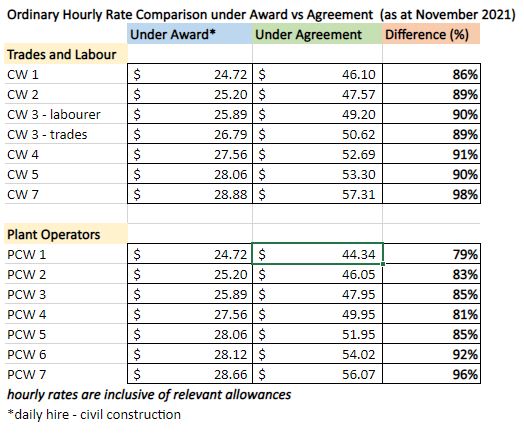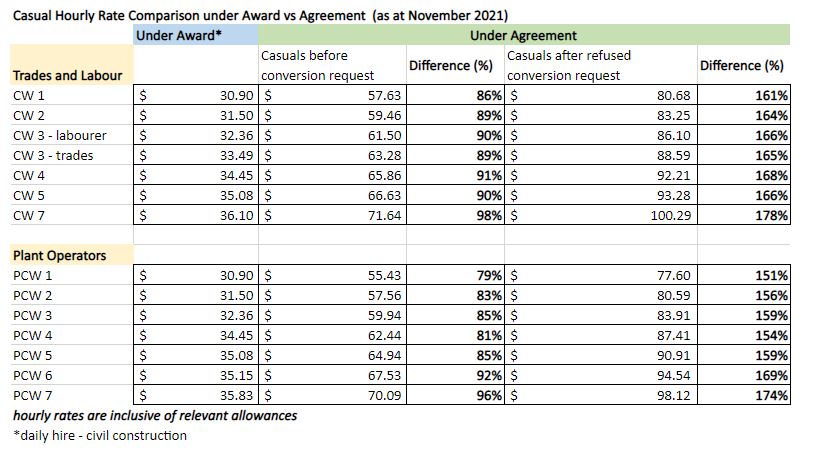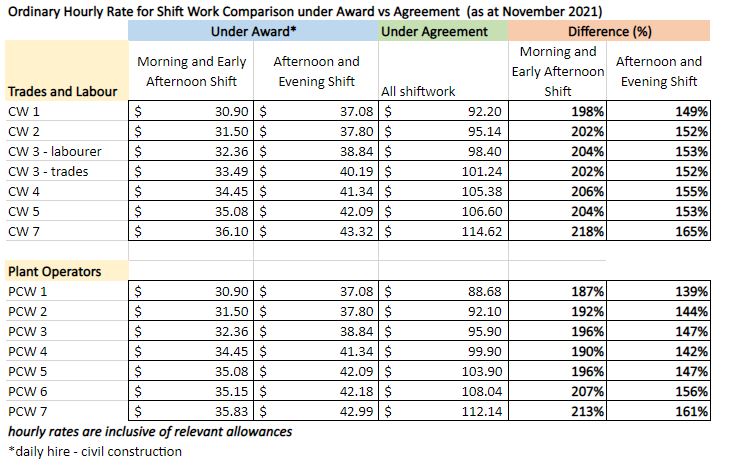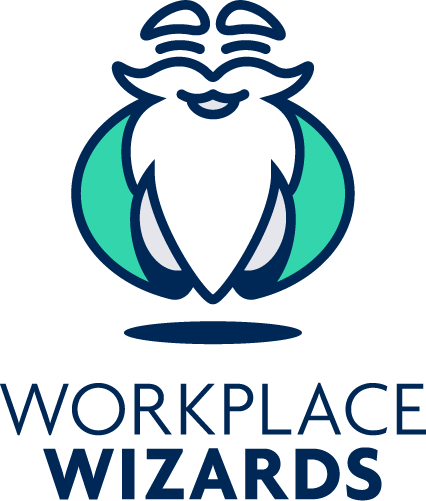Have you been approached by the CFMEU to sign their template 2020 – 2023 EBA? Are you unsure of how it compares to your current agreement or the modern award (the Building and Construction General On-Site Award 2020)? Read on to discover all the key features, hidden allowances and extra penalty rates and other unexploded financial landmines in the template Enterprise Bargaining Agreement (EBA) offered by the CFMEU.
In this blog we will go through
- Key Features of the Agreement
- A costs comparison of the Agreement versus Award
- Some considerations for Employers
KEY FEATURES OF THE CFMEU ENTERPRISE AGREEMENT
There are some key features of the template CFMEU template EBA which may be especially important for your business to consider. These include Agreement conditions which may have a significant impact on how you roster your workforce or may impact the flexibility of work arrangements such as employing casual staff. We’ll also compare what these conditions look like compared to the Award which provides the minimum legal conditions required for employees in the industry.
The key features and comparisons are:
TYPE OF EMPLOYMENT
All employees under the Agreement, except for casual employees, are daily hire employees.
This means that every employee covered under the Agreement (excl. Casuals) is entitled to ‘follow the job’ loading.
Hours of Work
The Agreement provides 36 hours a week, not the Award–stipulated 38 hours.
Overtime
All overtime is paid double time.
This is much more generous than the Award, which specifies time and a half for the first two hours and then double time thereafter.
CASUAL WORKFORCE
1 Minimum Engagement
Notably, casuals have a minimum engagement of a full day (8 hours) under the template CFMEU EBA. This means that if a casual employee is rostered to work a shift, they must be paid for a full 8 hours of work even if their shift is shorter or they’re not needed after a morning’s work.
This is much higher than the 4 hours’ minimum engagement under the Award.
2 Casual Conversion
Casual employees who have regular and systemic hours have the legal right to request to be a permanent worker after a mere 4 weeks of working with you!
If you refuse this request, the casual becomes entitled to 175% of the Agreement’s ordinary hourly rate, meaning the casual loading jumps up to 75%! No doubt your casuals will immediately be ‘trying on’ this casual conversion entitlement after a month’s work so be prepared for these requests, and the hefty loading costs which kick in too!
SHIFT WORKERS
A shift worker under the Agreement is paid double time for all their hours worked. This is as opposed to the shift loading under the Award which is only around 25% – 50% extra, depending on the shifts they work.
Therefore, in comparison to the Award, the hourly rate of a shift worker can be 50 – 75% higher under the CFMEU template EBA. Can you afford to work shiftwork ‘round the clock’ on this labour cost basis?
ROSTERED DAY OFF
Employees under the CFMEU agreement are provided double the RDOs that what is provided in the Award. This means, as opposed to RDOs accruing on every 20th day as per the Award, under the CFMEU template EBA it will accrue on every 10th day.
COSTS COMPARISON: AGREEMENT VERSUS THE BUILDING AND CONSTRUCTION AWARD
Notwithstanding the above, the most eye watering feature of the CFMEU template EBA is the significant hourly wage rates paid to workers at all levels, far exceeding the Award-based pay scales for the industry. As shown in the tables below, experienced CW7 employees are paid almost double under the CFMEU template EBA as the Award minimum rate, for every single hour worked. This gulf becomes more pronounced for overtime and shift work.
Wage Comparison – daily hire employees

Wage Comparison – Casual Employees

Wage Comparison – Shift Workers

WHAT DOES THIS MEAN FOR YOUR BUSINESS?
As indicated by the comparison tables above, the CFMEU template EBA requires employers to reconsider their workforce operations and cost base. You need to decide whether signing this legally-binding agreement is plausible for your business, given your operational and financial requirements.
Some key considerations to note are:
- Casual Workforces
There may be a strong incentive for employers to reduce their casual workforce. Casuals may still be relied upon to meet quick demands in labour shortages or where hours are not regular. However, where they become regular parts of the work force, unless the employer converts them to permanent, they will be entitled to a 75% loading.
- Shiftwork
This EBA also builds in a strong disincentive to use shift workers. The double time pay for all hours worked by shiftworkers is a compounding cost off the generous above-Award wage rates in the EBA. When this is coupled with other escalating costs for your business (such as shift loading being included in Ordinary Times Earnings (OTE), meaning employers must pay super on those shift loading amounts) the shift worker labour cost might become prohibitive. Therefore, where you work on projects which require work to be performed throughout the 24 hours cycle you need to consider whether this EBA limits your ability to employ (or afford) shiftworkers or ensure this is factored into your tender price.
WHERE TO FROM HERE?
Importantly, construction employers should consider if they wish to sign on the CFMEU template EBA, or if it is preferred to have an agreement which is fair for workers but your business as well, and is more tailored to your size, flexibility needs and business operations. You may even consider starting out with the CFMEU template EBA and adopting the industry-common clauses and practices, but then altering some of the more ridiculous and unaffordable ‘overs’ this EBA contains, which are not as essential nor defensible (in the current uncertain economic environment).
Whichever option is chosen, you need to create, and have your workers approve, an agreement which pays workers fairly, but also meets your business requirements and financial constraints. We have sadly seen many employers sign onto a CFMEU template EBA because “we were told we have to” only to apply it for one specific project or short period, only to discover (to their horror) the agreement operates for years and to every project worked on through that multi-year period. The level of underpayments of wages not passed on to workers over such a period is staggering and potentially business-ending!
If you want support assessing your options, negotiating your own tailored EBA or end-to-end support from managing your relationship with your trade union, drafting an EBA that meets your needs through to Fair Work Commission approval – we’re here to help! We specialise in supporting employers through EBA projects from start to finish, and have extensive experience supporting construction clients (and liaising with construction trade unions). So, no matter what stage you are at with your own EBA, if you have any questions or want any support, reach out and let us know.
If you would like to know more about this or any other queries you may have, you can contact the Workplace Wizards team on support@workplacewizards.com.au or 03 9087 6949.




0 Comments Leave a comment
Comments are closed.